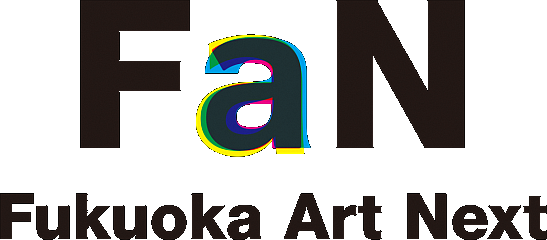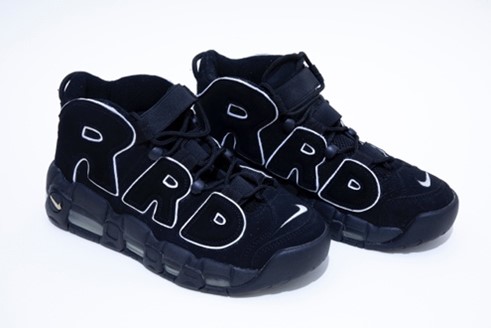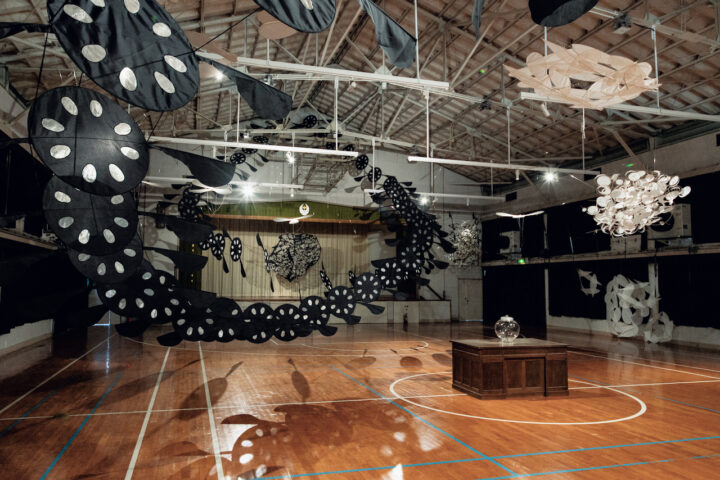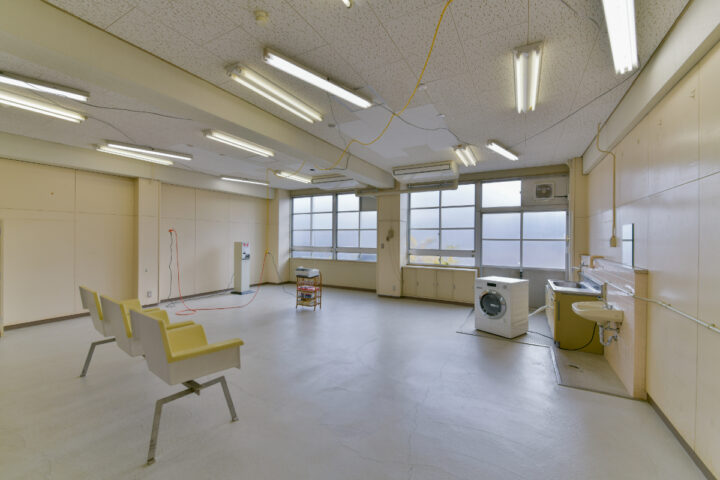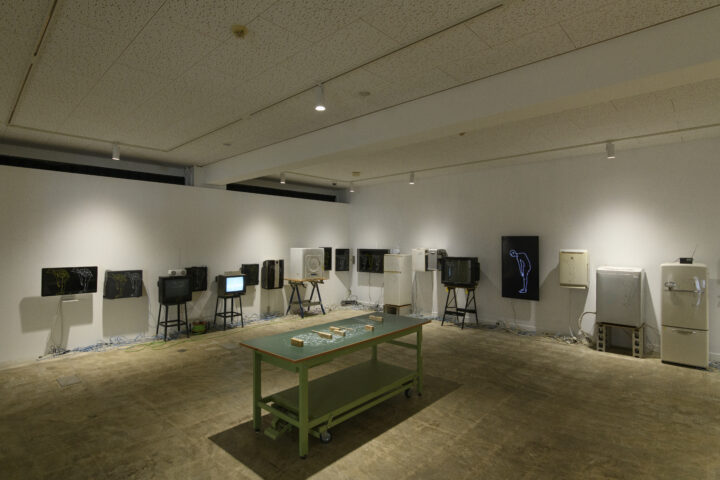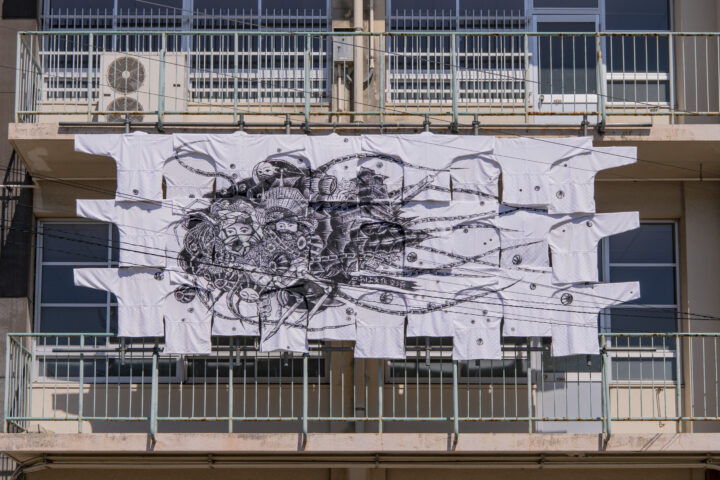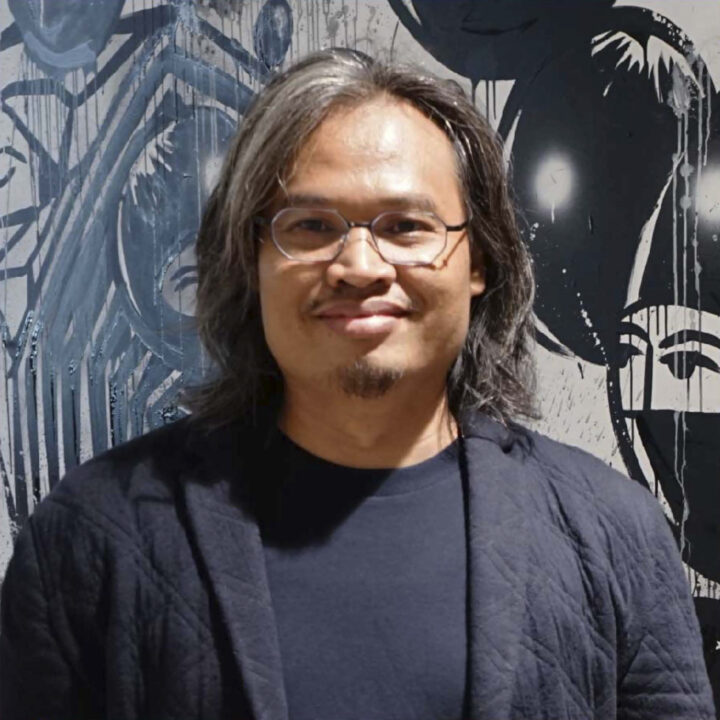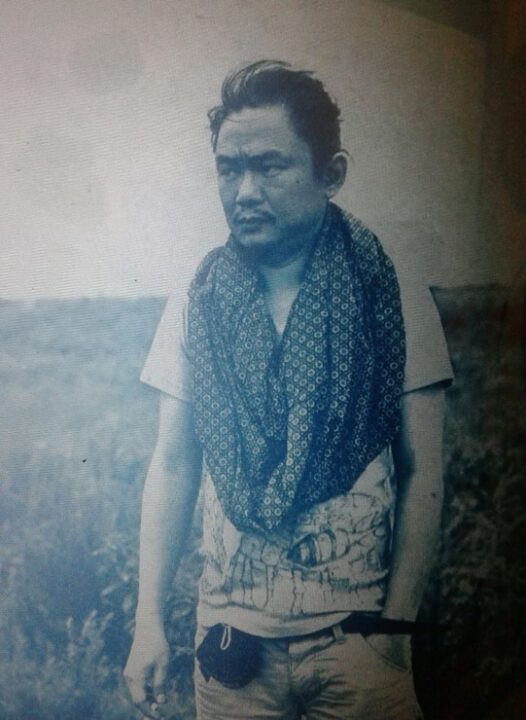Bruno Ruiz

Born in 1990, in Mexico. Based in Mexico City.
2024 (Solo) “Residency presentation at SAM" Singapore Art Museum, (SG)
2023 (RRD collective) “RedEx Express” as part of Copy Machine Manifestos: Artist Who Make Zines, Brooklyn Museum, (US)
2023 (RRD collective) “Micromuseo RRD” as part of Eso es la vida/This is life: Graphic Design from Mexico, Palm Springs Art Museum (US)
[Residence Program] Oct 5, 2024〜Dec 25, 2024
Bruno Ruiz Official Instagram RRD Collective Official website
Profile
Ruiz considers his project to be two-fold, with each component informing another in flux. The first is his own collective practice with Red de Reproducción y Distribución (RRD), through which they regard publishing as a tool to make public, as it not only enables distribution of content, but also collaboration throughout the process. The artist plans to present the mimeograph machine, the principal tool that allows for such collaboration, and its results.
The project to be developed in Fukuoka is focused on the field of independent publishing, particularly for its potential to connect and distribute. Ruiz is also particularly interested in the tradition of Mail Art, a network expanded by artists who used the postal system to exchange small-scale works. Ruiz understands that there can be no history of mail art without the contribution of the Gutai Art Association, continued with participation in Fluxus, and flourished under the leadership of Shozo Shimamoto in Artists Union/Art Unidentified.
WINDS OF ARTIST IN RESIDENCE 2024: Arising from the Margins
Interaction Diary
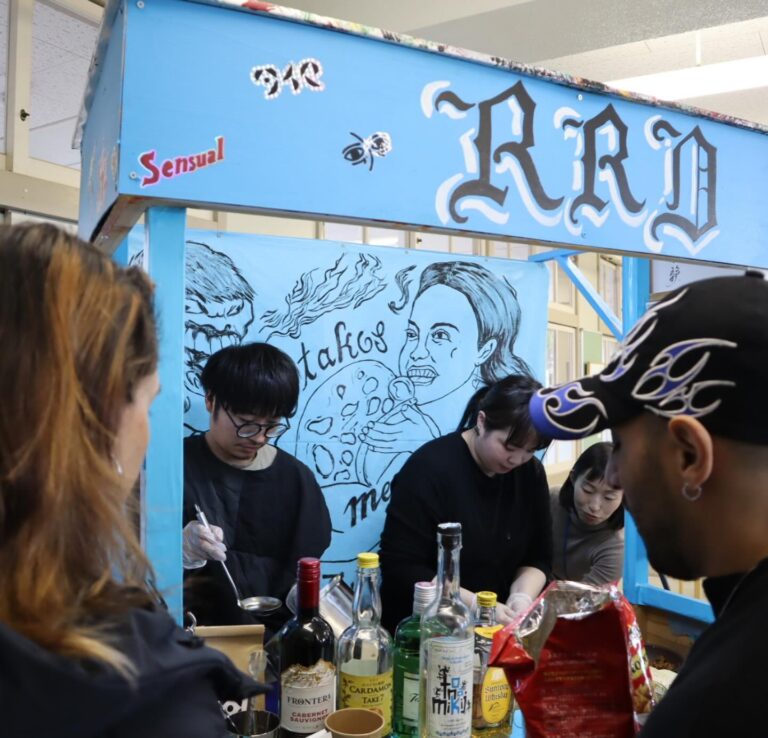
December 14 Opening Party “RRD×YATAI BAR TAIYA” (ACF)
During the party, Bruno collaborated with Shimodera Takanori, one of the previous artists in residence (fiscal year 2022). He offered food and drinks such as Tacos and Ponche, making a bustling space gathered by people from different backgrounds.

December 14 Opening Talk(ACF)
Bruno described the history of gariban, his research in Shiga and Gifu, and each piece of work displayed in studio. He also emphasized the importance of collaborative process in the workshop when making art and expressing thoughts using gariban.

December 14 WINDS OF ARTIST IN RESIDENCE 2024: Arising from the Margins (ACF)
Bruno presented his installation piece titled Gariban Otaku Society for the exhibition.
Photo credit: Nagano Satoshi

December 13 Exhibition Preparation
Bruno made drawings on the sign and curtain which will be attached to the yatai (food stall) for the opening party.

December 11 Workshop Presentation (M8 Lounge, FAAM)
Artworks made by students from Najima Elementary School who joined Bruno’s Workshop “Let’s Visualize Gari-gari in an Artwork !” were displayed in the museum.

December 11 Exhibition Preparation
Bruno framed the works made at the workshop “Gariban Otaku Society,” and also finalized his publication and video work.

December 7 Kawabe Naho visits the Studio
On this day, another artist Kawabe Naho, who joined the previous artist in residence program (the third period of the fiscal year 2023), visited the studio in ACF. Bruno explained Kawabe about his research on gariban and ongoing works.

December 3 DOCUPERU visits the Studio
DOCUPERU, who participated in the previous artist in residence program (the third period of the fiscal year 2022), visited the studio in ACF. They saw Bruno’s ongoing works and had conversations with the artist.

November 29 Workshop “Gariban Otaku Society” (ACF)
On this day, Bruno and Goto Sachiko who organizes “Goto Gariban Printing Office” in Kurume, gave introductory talks about gariban including its historical background. Later, each of the workshop participants made their own drawing and printed them with gariban. Matsumi Shinnosuke who is a member of Gari-banchi collective also joined the event. The workshop had a variety of participants, from small child to international students.

November 19 Online Meeting with Kanzaki Tomoko
Bruno met Kanzaki Tomoko, an artist and gariban researcher online. He described about his artistic practice and previous mimeograph projects he did in different regions of Asia. He also shared about what he learned during his research in Japan, his current plans and ideas. It was lucky for Bruno to hear Kanzaki’s thoughts about his idea, as well as historical and technical aspects of Japanese gariban.

November 15 Art-Making
Bruno started working with the local people who also make gariban prints to make new work for the exhibition. On this day, the local collective Gari-banchi visited his studio. Members of the Gari-banchi drew come calligraphy in Kanji (Chinese characters) followed by Spanish and English done by the artist himself. They combined the two works to make one printing plate.

November 9 Visited the Gariban Densho-kan (Higashiomi City)
On this day Bruno visited Gariban Densho-kan, the archive museum introducing history of Horii Shinjiro and his son, the two inventors of toshaban (mimeograph), the process of their inventions, and some references about what was happening in society at that time. At the beginning, Tanaka, the head of office gave him explanations and later Okada, the vice chairman of Shin-Gariban Network, demonstrated how the printing works using the machines.

November 8 Visited the Daito Tosha-Technical Archive Museum (Gifu City)
Bruno visited the museum and met Kamiyama, the CEO of the Daito Chemical Co., Ltd. and their publicist Kawamura, who guided him inside to introduce the history of mimeograph that is related to the craft of Japanese traditional paper known as washi. He was also given descriptions about technical development of mimeograph and its machines.

November 5 Workshop “Let’s Visualize Gari-gari in an Artwork !” (FAAM)
Bruno explained about Mexico city and its culture using images on screen to the students of Najima Elementary School. Then, he organized the workshop to print the drawings on which each student had prepared, which visualized images of a Japanese onomatopoeia sound of “gari-gari.” During the workshop, students also tried making their original zines using color papers while they wait for their turn for gariban printing.

October 27 Joined Gariban Workshop in Kurume
Bruno visited the Goto Gariban Print Shop in Kurume city, and joined the gariban workshop there. He inquired about the techniques and materials including paper or ink, used for Japanese gariban. After the workshop, he saw an exhibition of Tsukioka Yoshitoshi at the Kyushu Geibun-Kan.

October 25 Art Tour
On this day, Bruno visited the Faculty of Art and Design, Kyushu Sangyo University, and also Kyushu Sangyo University Zokei Junior College. There he learned about some available facilities and studios inside the university. During the visit he met Prof. Minami Satoru and inquired about pigments that are specially used for traditional Japanese painting, which he was interested in. He also saw the solo exhibition of Ushijima Tomoko at the Museum of Kyushu Sangyo University. Later, he went to see exhibitions in nearby contemporary art galleries, including the “philosophie” at the art space tetra, where he met a few artists, “Sakai Tadaomi” show at the art space baku, and “Wada Chiaki” exhibition in the gallery EUREKA.

October 22 Research Trip to Chikugo Region
Bruno visited Aizome-kasuri Kobo (an indigo dye studio) and Kobo-Ohki to learn about local textiles. He then met Bori Hironori, an artist in residence at Kyuukaminosho residence, who taught him techniques and tools for pyrography. At the end of the trip, Bruno visited the art studio of wood carpenter Sekiuchi Kiyoshi, and spent a long time to inquire him about gariban, which he planned to make.

October 20 Study on Gariban
Matsumi Shinosuke, one of the members of gariban collective Gari-banchi, based in Fukuoka, worked together with Bruno to experiment gariban print on a piece of wood cut to size.
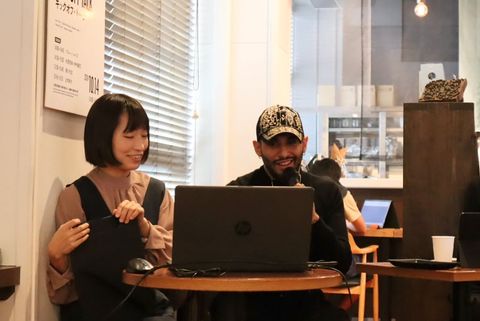
October 14 Kick-off Talk: Bruno Ruiz/Sugihara Nobuyuki×Nakamura Ayaka/Urakawa Taishi/Kamimura Takahiro (Community Space, ACF)
Bruno first introduced visual culture in Mexico, including sign paintings from Mexico City where he was born and is now based. He also introduced his previous works, including projects of his collective RRD, which started from a kiosk he and his friends bought. The artist shared images of his installations from his previous residency in other Asian countries, which incorporated sign paintings, banners, and some mimeograph printings. He told the audience that he plans to make printings and hold gari-ban(mimeograph) workshops in Fukuoka.

October 8 First day in Artist Cafe Fukuoka
After the guidance meeting with FAAM curators and AIR program coordinators, Bruno looked at other spaces and facilities in Artist Cafe Fukuoka.

